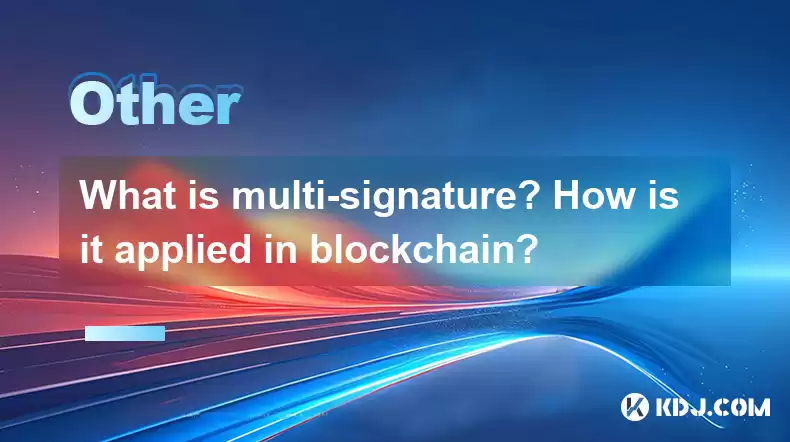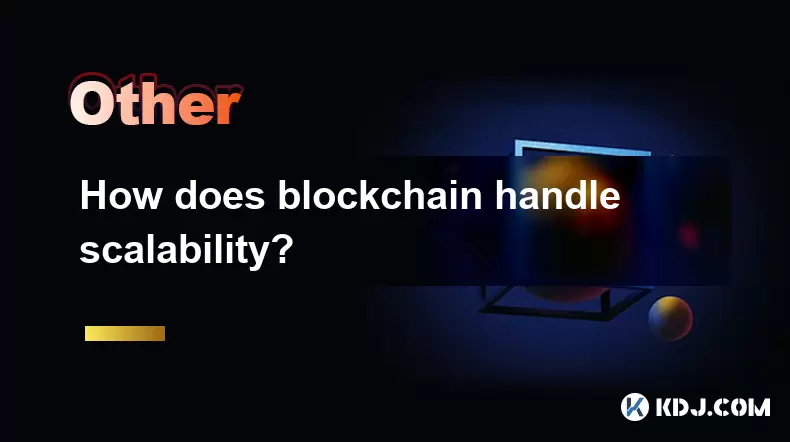-
 Bitcoin
Bitcoin $113900
-1.39% -
 Ethereum
Ethereum $3517
-4.15% -
 XRP
XRP $3.009
1.59% -
 Tether USDt
Tether USDt $0.9997
-0.04% -
 BNB
BNB $766.8
-1.41% -
 Solana
Solana $164.6
-2.38% -
 USDC
USDC $0.9998
-0.02% -
 TRON
TRON $0.3277
0.65% -
 Dogecoin
Dogecoin $0.2023
-1.67% -
 Cardano
Cardano $0.7246
0.05% -
 Hyperliquid
Hyperliquid $38.27
-4.77% -
 Sui
Sui $3.528
-0.52% -
 Stellar
Stellar $0.3890
-0.73% -
 Chainlink
Chainlink $16.16
-2.69% -
 Bitcoin Cash
Bitcoin Cash $539.9
-4.38% -
 Hedera
Hedera $0.2425
-2.00% -
 Avalanche
Avalanche $21.71
-0.97% -
 Toncoin
Toncoin $3.662
5.73% -
 Ethena USDe
Ethena USDe $1.000
-0.02% -
 UNUS SED LEO
UNUS SED LEO $8.964
0.35% -
 Litecoin
Litecoin $107.7
2.33% -
 Shiba Inu
Shiba Inu $0.00001223
-0.40% -
 Polkadot
Polkadot $3.617
-0.97% -
 Uniswap
Uniswap $9.052
-2.49% -
 Monero
Monero $295.1
-3.79% -
 Dai
Dai $0.9999
0.00% -
 Bitget Token
Bitget Token $4.315
-1.85% -
 Pepe
Pepe $0.00001060
0.11% -
 Cronos
Cronos $0.1342
-2.72% -
 Aave
Aave $256.0
-0.87%
What is multi-signature? How is it applied in blockchain?
Multisig requires multiple keys to authorize blockchain transactions, enhancing security in wallets, DAOs, smart contracts, and escrow services.
Apr 28, 2025 at 12:56 pm

What is Multi-Signature?
Multi-signature, often abbreviated as multisig, is a digital signature scheme that requires more than one key to authorize a transaction. In traditional financial systems, a single signature might be enough to authorize a transaction. However, in the realm of cryptocurrencies and blockchain technology, multisig adds an extra layer of security and control. This method is particularly useful for managing funds in a more secure and collaborative manner.
How Multi-Signature Works
In a multisig setup, a transaction can only be executed if a specified number of signatures from a group of pre-defined keys are provided. For example, in a 2-of-3 multisig wallet, three different keys are involved, but any two of them are sufficient to authorize a transaction. This setup can be described as M-of-N, where M is the number of signatures required, and N is the total number of keys.
- Creation of a Multisig Address: The process begins with generating a multisig address. This address is derived from the public keys of the participants. Each participant must provide their public key, and these keys are used to create the multisig address.
- Transaction Proposal: When a participant wants to initiate a transaction, they create a proposal and sign it with their private key.
- Signature Collection: Other participants must then review the proposed transaction and sign it with their private keys if they approve.
- Transaction Execution: Once the required number of signatures (M) is collected, the transaction can be broadcast to the blockchain network for validation and execution.
Applications of Multi-Signature in Blockchain
Multisig technology has found numerous applications within the blockchain ecosystem, enhancing security and governance across various platforms.
Secure Wallets
One of the primary uses of multisig is in creating secure cryptocurrency wallets. These wallets require multiple signatures to move funds, reducing the risk of theft or unauthorized access. For instance, a company might use a 3-of-5 multisig wallet to manage its treasury, ensuring that no single employee can move funds without the approval of at least two others.
Decentralized Autonomous Organizations (DAOs)
Multisig wallets are crucial for the operation of Decentralized Autonomous Organizations (DAOs). In a DAO, governance decisions are often made through voting mechanisms, and multisig wallets can be used to implement these decisions securely. For example, a DAO might require a 5-of-9 multisig to execute any financial transaction, ensuring broad consensus among members.
Smart Contracts
In the context of smart contracts, multisig can be used to add an extra layer of security and control. A smart contract might be programmed to require multiple signatures before executing certain actions, such as transferring funds or updating contract parameters. This ensures that no single party can unilaterally alter the contract's behavior.
Escrow Services
Multisig is also widely used in escrow services within the blockchain space. In an escrow arrangement, funds are held in a multisig wallet until certain conditions are met. For example, in a peer-to-peer marketplace, a buyer and seller might use a 2-of-3 multisig wallet where the third key is held by a neutral third party. The transaction is only completed when both the buyer and seller agree, or the third party mediates in case of a dispute.
Implementing Multi-Signature in Practice
To implement a multisig solution, users can follow these steps:
- Choose a Platform: Select a blockchain platform that supports multisig functionality. Popular choices include Bitcoin, Ethereum, and various other cryptocurrencies.
- Generate Public Keys: Each participant generates their own public key. These keys are used to create the multisig address.
- Create the Multisig Address: Use a wallet or a tool that supports multisig to combine the public keys and generate the multisig address. For example, on Bitcoin, you can use tools like Electrum or Bitcoin Core to create a multisig address.
- Fund the Multisig Address: Transfer funds to the newly created multisig address.
- Propose and Sign Transactions: When a transaction needs to be made, one participant proposes the transaction and signs it. Other participants review and sign if they approve.
- Broadcast the Transaction: Once the required number of signatures is collected, the transaction can be broadcast to the network.
Security Considerations
While multisig adds a layer of security, it is important to consider the following aspects:
- Key Management: The security of a multisig setup heavily depends on the proper management of the keys. Losing access to the required number of keys can result in the permanent loss of funds.
- Social Engineering: Participants in a multisig setup must be vigilant against social engineering attacks, as attackers might try to trick them into signing malicious transactions.
- Complexity: Multisig setups can be more complex to manage than single-signature setups, requiring participants to be well-versed in the technology.
Frequently Asked Questions
Q: Can multisig wallets be used on any blockchain?
A: Not all blockchains support multisig functionality out of the box. However, many popular blockchains like Bitcoin and Ethereum do support multisig. It's important to check the specific capabilities of the blockchain you are using.
Q: How do I recover funds if I lose one of the keys in a multisig setup?
A: Recovery in a multisig setup depends on the specific configuration. If you have set up a M-of-N multisig where M is less than N, you can still access your funds as long as you have access to at least M keys. If you lose more than N-M keys, you may lose access to your funds permanently.
Q: Are multisig wallets more expensive to use than regular wallets?
A: The cost of using a multisig wallet can be slightly higher due to the larger transaction size, which may result in higher transaction fees. However, the security benefits often outweigh the minor increase in costs.
Q: Can multisig be used for non-financial transactions on the blockchain?
A: Yes, multisig can be used for any type of transaction that requires multiple parties to agree. This includes updating smart contracts, changing governance parameters, and other actions that require consensus among multiple stakeholders.
Disclaimer:info@kdj.com
The information provided is not trading advice. kdj.com does not assume any responsibility for any investments made based on the information provided in this article. Cryptocurrencies are highly volatile and it is highly recommended that you invest with caution after thorough research!
If you believe that the content used on this website infringes your copyright, please contact us immediately (info@kdj.com) and we will delete it promptly.
- Bitcoin, XRP, and the Price Drop Blues: What's Shakin' in Crypto?
- 2025-08-03 00:30:12
- Bank of America, Ripple, and RLUSD: A New Era in Digital Finance?
- 2025-08-03 00:30:12
- Bitcoin Strategy: Saylor's Not Hoarding, He's Building an Empire
- 2025-08-02 22:30:12
- Bitcoin Bloodbath: Macro Pressures and Liquidations Unleash Crypto Chaos
- 2025-08-02 22:30:12
- Tron, Cold Wallets, and Crypto Trends: What's Hot in the Market?
- 2025-08-02 23:10:12
- Bitcoin's Wild Ride: Davinci, Investors, and the $500K Dream
- 2025-08-02 23:50:12
Related knowledge

What is the difference between on-chain and off-chain transactions?
Aug 02,2025 at 04:22pm
Understanding On-Chain TransactionsOn-chain transactions refer to digital asset transfers that are recorded directly on a blockchain ledger. These tra...

What is the double-spending problem and how does blockchain prevent it?
Aug 02,2025 at 01:07pm
Understanding the Double-Spending ProblemThe double-spending problem is a fundamental challenge in digital currency systems where the same digital tok...

What is the difference between a blockchain and a database?
Aug 01,2025 at 09:36pm
Understanding the Core Structure of a BlockchainA blockchain is a decentralized digital ledger that records data in a series of immutable blocks linke...

How does blockchain handle scalability?
Aug 02,2025 at 02:58pm
Understanding Blockchain Scalability ChallengesBlockchain scalability refers to a network's ability to handle an increasing volume of transactions wit...

What is a hash in a blockchain?
Aug 02,2025 at 05:28am
Understanding the Concept of Hash in BlockchainA hash in the context of blockchain technology refers to a unique digital fingerprint generated by a cr...

What is a hash in a blockchain?
Aug 02,2025 at 04:43am
Understanding the Concept of Hash in BlockchainA hash in the context of blockchain technology refers to a unique digital fingerprint generated by a cr...

What is the difference between on-chain and off-chain transactions?
Aug 02,2025 at 04:22pm
Understanding On-Chain TransactionsOn-chain transactions refer to digital asset transfers that are recorded directly on a blockchain ledger. These tra...

What is the double-spending problem and how does blockchain prevent it?
Aug 02,2025 at 01:07pm
Understanding the Double-Spending ProblemThe double-spending problem is a fundamental challenge in digital currency systems where the same digital tok...

What is the difference between a blockchain and a database?
Aug 01,2025 at 09:36pm
Understanding the Core Structure of a BlockchainA blockchain is a decentralized digital ledger that records data in a series of immutable blocks linke...

How does blockchain handle scalability?
Aug 02,2025 at 02:58pm
Understanding Blockchain Scalability ChallengesBlockchain scalability refers to a network's ability to handle an increasing volume of transactions wit...

What is a hash in a blockchain?
Aug 02,2025 at 05:28am
Understanding the Concept of Hash in BlockchainA hash in the context of blockchain technology refers to a unique digital fingerprint generated by a cr...

What is a hash in a blockchain?
Aug 02,2025 at 04:43am
Understanding the Concept of Hash in BlockchainA hash in the context of blockchain technology refers to a unique digital fingerprint generated by a cr...
See all articles

























































































